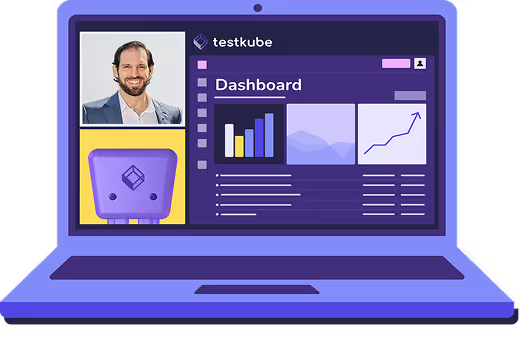

Table of Contents
Try Testkube instantly in our sandbox. No setup needed.
Try Testkube instantly in our sandbox. No setup needed.




Table of Contents
Executive Summary
Latest release expands test visibility across complex environments while previewing our platform's technical future.
Testing distributed applications can sometimes feel like herding cats. Your microservices are scattered across clusters, tests are running everywhere, and when something breaks, good luck figuring out where to even start looking. Traditional testing approaches that worked fine for monolithic apps just crumble under this complexity.
Testkube's continuous testing platform was designed specifically for this reality. Teams using it consistently report better software quality, faster releases, and lower operational overhead. The platform handles the orchestration chaos so you can focus on what actually matters: shipping reliable code.
Our newest release tackles two areas that keep coming up in user feedback: getting clearer visibility into test results across large environments, and pioneering the next generation of our platform infrastructure through our open source community.
See the Forest and the Trees
Here's the daily struggle: you've got tests running across multiple pipelines, different tools, various clusters. Results are everywhere. Logs are scattered. When leadership asks "are we ready to ship?" you're suddenly playing detective across a dozen different dashboards.
Testkube already centralizes all this automatically (no scripting marathons required). But we've taken it further with advanced filtering that lets you group test executions however makes sense for your workflow.
Label-Based Grouping
Label your Test Workflows with whatever metadata matters to you (release numbers, team names, test types) then filter and analyze across those dimensions when you execute them. Want to see how all your Playwright, Postman, and K6 tests performed for release 2.1.4? One view, regardless of which workflows they came from.
This builds on the workflow health system we shipped in June, where weather-style indicators (sunny, cloudy, raining) help you spot problematic patterns at a glance. Combined with clearer status categories (passed, failed, cancelled, or aborted due to infrastructure issues) you get the full picture without the guesswork.
Open Source Leading Our Platform Evolution
Our open source community gets first access to major platform improvements. With the simultaneous release of Testkube Agent 2.2, we're migrating our open source agent from MongoDB to PostgreSQL, the same architectural evolution coming to our entire commercial platform by Q4 2025.
This isn't just about giving back to the community (though we're proud to do that). It's about proving our next-generation infrastructure in production before rolling it out to commercial customers. Our open source users are helping us ensure that the PostgreSQL migration delivers on its promises: better performance, simpler operations, and more reliable scaling.
What This Means For Commercial Customers
The PostgreSQL migration you'll see later this year has already been battle-tested by thousands of open source deployments. When it reaches our commercial control plane, you'll get infrastructure improvements that have been proven in the wild.
What This Means For Our Commitment to Open Source
We're not treating OSS as an afterthought. We're using it as the proving ground for our most significant technical advances, giving the community premium infrastructure ahead of paying customers.
Ready to Use
Testkube v1.17.1 is available now. Hosted customers get automatic upgrades, while self-managed deployments can grab the latest at testkube.io. Open source users can update to agent v2.2 from our GitHub repository.
Testing cloud-native applications doesn't have to feel like chaos. With proper orchestration and forward-thinking infrastructure, it becomes predictable, reliable, and actually useful for making release decisions.


About Testkube
Testkube is a cloud-native continuous testing platform for Kubernetes. It runs tests directly in your clusters, works with any CI/CD system, and supports every testing tool your team uses. By removing CI/CD bottlenecks, Testkube helps teams ship faster with confidence.
Explore the sandbox to see Testkube in action.






